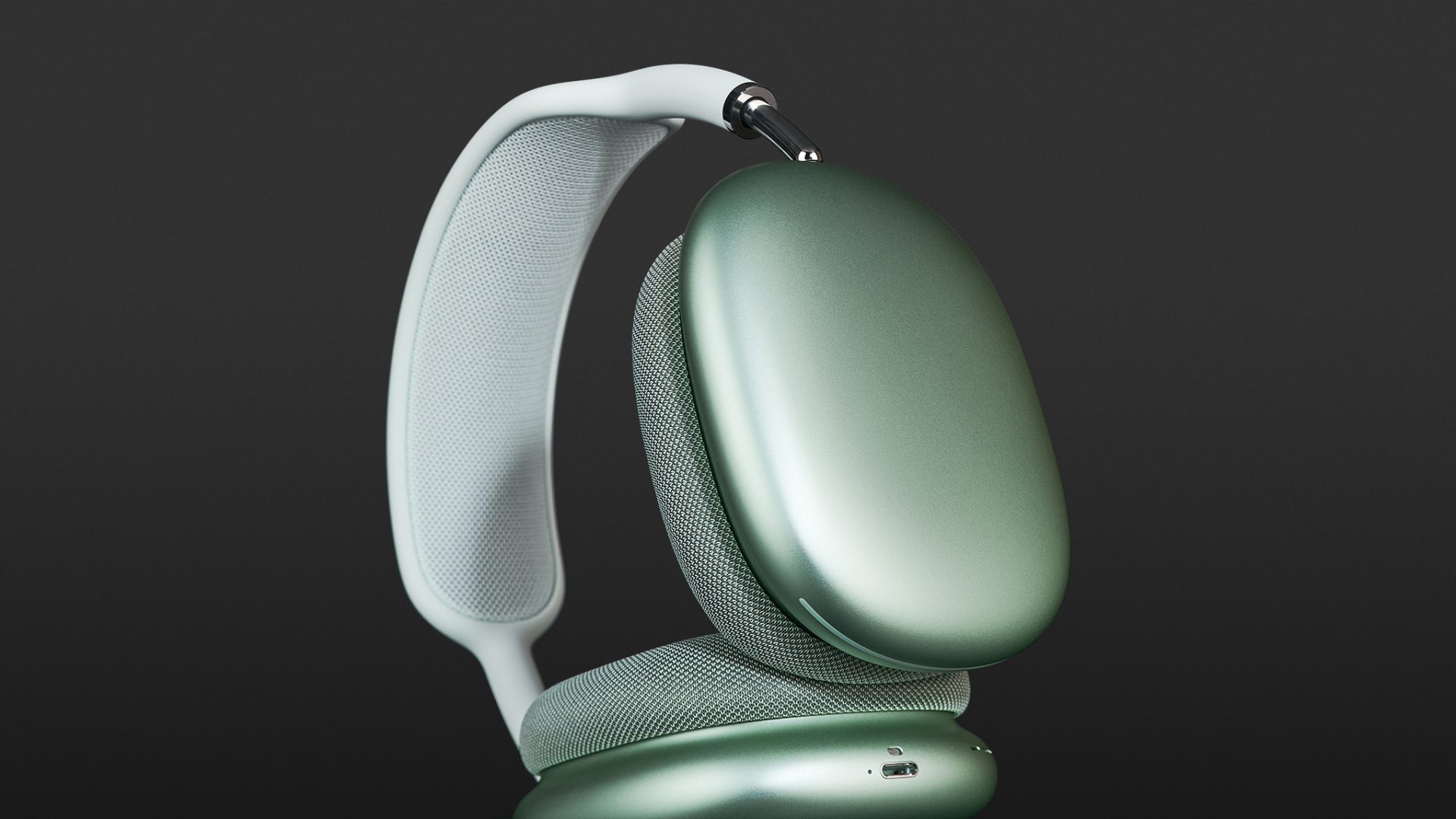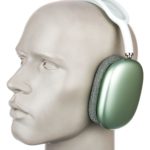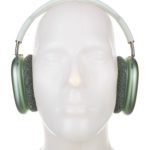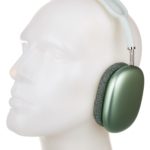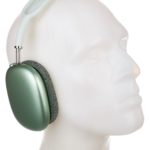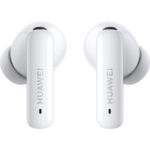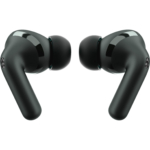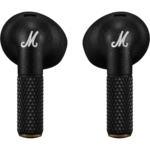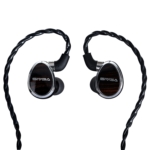We’ve saved the big question for very end: are the Apple AirPods Max worth the money? We might be reprimanded by audiophile listeners, but yes, 600 Euros simply buys you a pair of headphones that are perfectly matched to (almost) any Apple hardware. We were not only impressed by the very easy integration and interaction, but also by the excellent noise cancelling and, last but not least, the excellent sound. The AirPods Max also satisfy the demands of the audiophile – depending on how high you set the bar.
Apple has added the first over-ear headphones to its range with the AirPods Max, which must be pretty good as they cost 600 Euros – and for those of us who live in the Apple world this is certainly the case. Those who are just looking for a good pair of true-wireless headphones are nevertheless cordially invited to read the review of the AirPods Max, knowing full well that they might change their minds afterwards.

We chose the lime green version because it was listed as the soonest available in the Apple Store in December 2020. There is a selection of colours to suit all tastes: white, grey, blue, red and green – each with pastel accents. The “physical” aspect of the AirPods Max is also très chic. The Apple-typical anodised aluminium of the ear cups, comfortable, fabric-covered replaceable ear pads, an extremely trustworthy telescopic bracket that allow the earpieces to be adjusted to the shape of the head by pushing and pulling rather vigorously, and a rubber-like textile mesh covering on the headband – these Apple headphones made an extremely positive impression when we first tried them on. However, it remains to be seen how long the light green headband of the version we chose will remain free of discolouration.
From a purely visual standpoint, the AirPods Max are really something. But you have to be willing to invest in them, especially if you go for the more colourful versions. Discreet they are not. As with the smaller AirPods “sticks”, we can imagine someone wearing these over-ear AirPods for purely status reasons. They will definitely get them noticed…
Specifications
As a member of the Apple family, the AirPods Max are appropriately equipped on the hardware side and smoothly connect with Apple devices on the software side. With two integrated H1 chips, the actions between Apple computers, tablets, phones and watches, etc, are managed quite elegantly – but we’ll come back to that later.
High standards are also satisfied in terms of audio technology with Bluetooth 5 and Apple’s own AAC codec both in play; in particular, the eight integrated microphones for noise-cancelling and transparency mode perform amazingly even at the first listen.
Also, the AirPods Max are packed with sensors and processors to handle things like power management.
We looked in vain for an analogue jack, the only cable accepted is a Lightning cable (a short one is included) to plug it into a power adapter (not included) for charging. To make use of the fast charging function, however, it needs a charging adapter that delivers between 10 and 20 watts.
Using the Max via USB audio protocol as an input and output device doesn’t work. Also, one might rightly ask how one can connect the AirPods Max to the in-flight entertainment system on an aeroplane, for example. Sad but true: a separate adapter (Lightning to mini jack) must be purchased for this – the original from Apple costs an extra 39 Euros. However, this adapter also allows you to connect them to a computer, for example, to play uncompressed music files. Unfortunately, the small Lightning headphone adapter that used to come with iPhones does not work.
The AirPods Max are multipoint-capable, so they switch back and forth between different Apple devices as best they can. Very practical if you answer a phone call on the iPhone but want to maintain the connection to a Mac for example. The incoming call then stops the video or audio at the moment the call is accepted and restarts it when the call ends.
And the new 3D audio allows for immersive, three-dimensional audio both from corresponding videos and also when gaming – but more on this later as well.
Operation
In principle, Apple headphones are “operated” by the operating systems iOS, iPadOS or macOS. So there is no need for an extra app. As soon as a pair of AirPods Max appears in your personal Apple universe, it is noted accordingly and can be viewed and set up via widgets or in the system menus – although there is not much to set. Apple does not use gesture control with the AirPods Max and relies on a button – similar to those on Apple Watches. Pressing it pauses media content or accepts calls, double pressing jumps a track forward, triple-clicking goes back one track. Pressing and holding summons Siri and turning the button controls the volume, the direction in which this should be increased or decreased can be defined in the Bluetooth settings. A second control element on the handset is a button on the upper front edge of the right shell. By default, this switches between noise-cancelling and transparency mode; if you want to use all three modes, you have to configure this accordingly in the device’s Bluetooth settings.
Power management
There is no on or off switch in the conventional sense. These headphones are somehow always on. When they’re not playing, they’re in sleep mode, which usually kicks in shortly after you put the headphones down. When you put the headphones back on, playback resumes quickly. Longer pauses are acknowledged by the headphones with a short connection delay, whereby corresponding messages appear on all Apple devices that the AirPods Max already recognises. The AirPods go into a deep sleep when the headphones are placed in the foil bag provided; this is somewhat reminiscent of the protective mats used in X-rays. Once the headphones are “bagged”, the sensors register a kind of sleep mode and leave the headphones in deep sleep with minimal energy consumption.
During our test phase, which lasted almost four weeks, we recharged the AirPods Max via Lightning approximately every two to three days. It’s not easy to measure how long they last. With approximately two to three hours of use per day, a two to three-day life is possible.
Very good noise-cancelling – terrific transparency mode
In the higher price ranges, noise-cancelling and its little sister – the transparency mode – are becoming increasingly important in determining how good headphones sound.
Noise cancelling initially proved itself brilliantly in more domestic noise situations in the time of lockdown. The noise of kitchen appliances such as coffee grinders, hoovers and even electric toothbrushes were consistently and comprehensively minimised to such an extent that there was a pleasant lack of disturbance while listening to podcasts or watching videos, even if all hell was breaking loose around you.
We simulated traffic noise – especially from aircraft – and here too the AirPods Max showed very high attenuation properties. Compared to the B&W PX7, the NC was more consistent across the audible range. The low frequencies in particularly were muffled more determinedly by these Apple headphones.
In transparency mode, the Apple AirPods Max surprised us with an almost true to life transmission of acoustic events. It was amazing to experience that even conversations at the family dinner table could be “heard through” the AirPods Max without any problems. A side note here that applies especially to those who are slightly hearing impaired. Thanks to the live listening feature, the Max can be used as a kind of hearing aid. For this purpose, your iPhone captures audio signals from the surroundings via the integrated microphone and forwards them to the headphones. And even those who, when watching TV, always had the problem of either hearing what was happening on the screen or the background conversation of their partner or family, can now conveniently have both thanks to the transparency mode (and, if need be, conveniently dim away the chatter of the person next to them on the sofa by deactivating the transparency mode).
Compatibility with Android
Apple headphones feel at home in the Apple universe, and that’s no different with the Max. But if you own an Android device or two, you can of course also use these headphones. To do this, you put the AirPods Max into pairing mode by holding down the NC button until the small status LED on the underside of the right ear cup starts to flash. Once both devices are connected, however, only a reduced functionality is available to the Android user: play, pause, track skipping forwards and backwards as well as switching on the NC modes. However, you’ll have to do without Google Assistant and the practical auto-pause feature. The Max simply continues to play when they are set down, deactivating the crown and the push-button.
3D audio
Thanks to Spatial Audio, the AirPods Max become a virtual cinema auditorium, as these headphones can reproduce surround sound content (5.1, 7.1 as well as Dolby Atmos). Although this cannot be compared to real surround sound, which requires real speakers in a real room, the combination with the integrated head tracking offers, in our opinion, probably the best mobile cinema experience around at the moment. Head tracking ensures that we always perceive all sound events relative to the screen. In other words, if we move our head, the sound does not “stick” exactly in the middle, but moves along with our head movements. This is controlled by the built-in acceleration and gyro sensors in the AirPods Max as well as in iPhones and iPads. This means that there is a constant comparison of the movement data.
It is precisely this combination that creates a very realistic effect because we constantly move our heads while watching films, and if we turn our heads, the dialogue or sound effects turn with us. This creates a spatiality and openness that can actually be described as a cinematic experience. However, this requires an iPhone or iPad (iOS 14 or higher); Apple TV is unfortunately not yet supported.
Sound
We’re just going to jump right in: the Apple AirPods Max just sound so damn good. Listening to our reference tracks and favourite songs, which we know inside out, left nothing to be desired. We never got the feeling that the AirPods Max swallowed details or radiated into other frequency ranges. The sound that came out of the dynamic 40-millimetre drivers had foundation, clarity and spaciousness. We listened to genres such as jazz, blues, classical, pop, rock, hip-hop and electronica, and the AirPods Max always made a positive impression: here the buzz of a guitar string, there those little timing fluctuations made by the drummer or the vibration of a resonator. Dense arrangements remained airy enough to identify exactly where which musician was standing. Intimate tracks also feel the same way – for a closed headphone, that’s pretty great stuff!
We could go on for hours discussing just how well the sounds came out of the AirPods Max, but what Apple has created here is really just very well done.
Are there any negatives to report? At 600 Euros, there must be something, and we looked for the infamous fly in the ointment. But we couldn’t really find it. Even the difference in sound quality between activated noise cancelling, transparency mode and normal mode was so small that most listeners won’t notice it in everyday use.
In practice
We took our time with this test. The AirPods Max travelled back and forth between two households for just under four weeks, and as much everyday life as possible was experienced with these lime green Apple headphones. Walking, household chores, working, watching videos, playing computer games, but also lying on the sofa and listening to music were among the tasks that the device we tested mastered with flying colours.
The large ear pads, the very large “listening areas” and the comfortable headband make these headphones extremely comfortable to wear. Spectacle wearers will also be happy – nothing pinches here, as the ear pads adapt to the arms of your glasses to the greatest possible extent. The transparency mode was particularly appealing – as far-fetched as this may sound. The AirPods Max cancel the closedness of a closed over-ear at the touch of a button, without having to put the headphones down. In everyday testing, this means: the headphones could actually be kept on all the time, even when not playing. When folded, the AirPods Max are still relatively bulky and are unlikely to fit into coat or jacket pockets. In travel luggage, they take up a fair amount of storage space.
The “multipoint” feature worked well – i.e. switching between devices. Here, all devices cooperated, unless additional headphones were registered somewhere. Then it didn’t always work well with the sleep-wake rhythm of the AirPods.
Technical specifications
- Ear couplingOver-ear
- Typeclosed
- Transducer principledynamic
- Weight without cable384,8 g
- Cable length100 cm
What's in the box
- USB C to Lightning cable
Special features
- available in white, grey, blue, red and green
- BT codecs: SBC, AAC
- BT version: 5.0
- up to 20 hrs playback
- 5 min. charging time for about 1.5 hrs playback
- 9 microphones in total
- adaptive EQ









